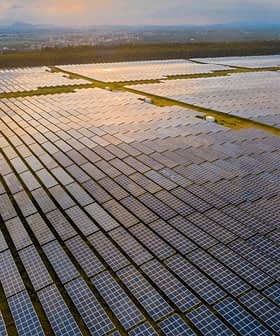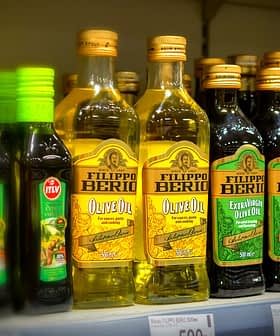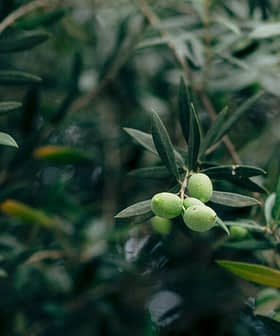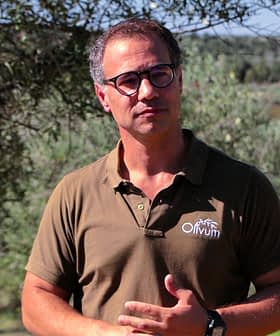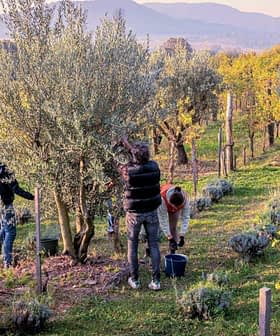Producers in Argentina Grapple with Inflation Ahead of 2023 Harvest

Producers in Argentina are facing the highest rate of inflation in three decades, with annual inflation reaching nearly 95 percent in 2022 and predicted to rise to almost 98 percent in 2023. The economic crisis has impacted all sectors, including olive oil production, leading to increased production costs and difficulties in exporting due to the parallel currency market and exchange rate discrepancies. Despite these challenges, producers are finding ways to keep the olive oil flowing and are optimistic about the upcoming harvest, with predictions for a robust production year.
With the start of the 2023 harvest less than two months away, producers across Argentina have been facing the highest rate of inflation in the past three decades.
According to data from INDEC, Argentina’s national statistics agency, annual inflation in 2022 reached nearly 95 percent. Analysts consulted by the country’s national bank predicted that this figure would rise to almost 98 percent in 2023.
The internal costs of electricity, fertilizers, phytosanitary products and transportation permanently increase every month or two.
A prolonged economic crisis has plagued South America’s largest olive oil producer due to a massive debt burden, excessive deficit spending and rampant devaluation of the local currency, the Argentine peso.
The ongoing crisis has impacted every economic sector, including olive oil production. However, producers have learned to live with rampant annual inflation, which has exceeded 50 percent in three of the past four years.
See Also:Argentina’s Germplasm Bank Supports Mission to Preserve Olive Cultivars“Living in a country with such a large inflationary impact, such as Argentina, makes people entrepreneurs and their companies completely change their savings and capitalization strategy,” Gabriel Guardia, the general manager of Mendoza-based Olivícola Laur, told Olive Oil Times.
“We know perfectly well that the peso is a currency that cannot be trusted or saved,” he added. “Therefore, there is no other option than to invest, spend it… or save in dollars. There is no other alternative.”
However, the Argentine government has imposed strict limits on the amount of dollars that private citizens and companies can buy. As a result, an illegal parallel market, known as the blue dollar, has emerged, which is about 50 percent lower than the official exchange rate.
The parallel exchange rates have compounded the impacts of inflation, especially on locally-sourced inputs.
“The internal costs of electricity, fertilizers, phytosanitary products and transportation permanently increase every month or two,” Guardia said.
Julián Clusellas, president of the Valle de La Puerta olive oil company and a board member of the Argentine Olive Federation, told Olive Oil Times that the cost of labor and fertilizer had doubled since the start of last year.
He added that the cost of phytosanitary products and electricity, which is required to power the mills and irrigation systems upon which nearly all of the country’s olive groves rely, had also risen significantly.
Guillermo Kemp, the commercial director of Solfrut, added that inflation and other external factors have made purchasing other necessary inputs, such as bottles, caps and labels, an additional complication.
“These problems complicate our production plans, which are constantly adjusted to meet all the payment commitments that the company has,” he told Olive Oil Times.
Due to the increase in production costs, olive oil sold domestically also has to increase in price every two to three months.
According to Clusellas, this has resulted in many local producers forsaking the domestic market and sticking to exports, mainly to the United States, Europe and Brazil.
“What has saved us this year is the international price that is very high, 40 percent more than it was last year,” he said.
However, the combination of inflation and the parallel currency markets means that not all exports are profitable.
“The great battle is with the internal costs since the inputs increase their value in parallel dollars,” Guardia said.
Often, producers purchase goods and services for the blue dollar (about 380 pesos) while converting their revenue from exports at the official rate (about 190 pesos).
“This gap strongly harms the competitiveness of exports,” Guardia added. “Our export markets have practically collapsed by 90 percent since we cannot compete with the most stable producing countries, such as Spain and Portugal.”
Clusellas agreed: “The exchange rate discrepancy is killing us like it is with all producers who export.”
Despite the challenges posed by inflation and Argentina’s currency crisis, producers continue to find ways to keep the olive oil flowing.
For example, Solfrut continues to create economies of scale and improve efficiency to lower the price per kilogram of olives grown and liter of oil produced.
“Our strategy is to continue increasing production levels as new olive groves are incorporated into the production scheme and, on the other hand, to improve productivity through better water management (irrigation) and pruning, as well as the incorporation of new renewable energy in irrigation and production systems,” Kemp said.
Guardia added that constant devaluation of the peso means that the most economical thing for producers to do is constantly re-invest.
“Companies generally end up reinvesting the profit in fixed assets,” he said. “Argentina has the motto that what we see today as expensive is cheap tomorrow.”
“This is why we frequently see that in moments of crisis, investment increases, the purchase of machinery increases, the expansion of industries that found a return despite inflation increases,” he added. Industries that do not invest and cannot beat inflation die out.
As in other countries, inflation in Argentina peaked from June to August and has decreased ever so slightly since. This offers a slight reprieve to producers, as do predictions for the upcoming harvest, which begins next month.
Clusellas said he thinks Argentina will produce about 30,000 tons of olive oil this year, in line with the rolling five-year average of 33,200 tons. He based his prediction on many producers entering an ‘on-year’ in the natural alternate bearing cycle of the olive tree.
Kemp said that Solfrut would begin its harvest in the middle of next month and predicts a slightly higher yield this year than in 2022.
“In some of our farms, such as Chilecito, we will have a year of high production, higher than 2022,” he said. “Regarding our farms in San Juan, the expected production levels are similar to 2022.”
Meanwhile, in Mendoza, Guardia also expects a robust harvest.
“The trees are well-loaded with olives, and we have had a fairly dry climate so far, which could favor a good lipogenesis if everything remains the same,” he said. “We hope to continue the year without climatic inconveniences.”
“And if this happens, the harvest will be quite good,” Guardia concluded. “It’s not all bad news.”



